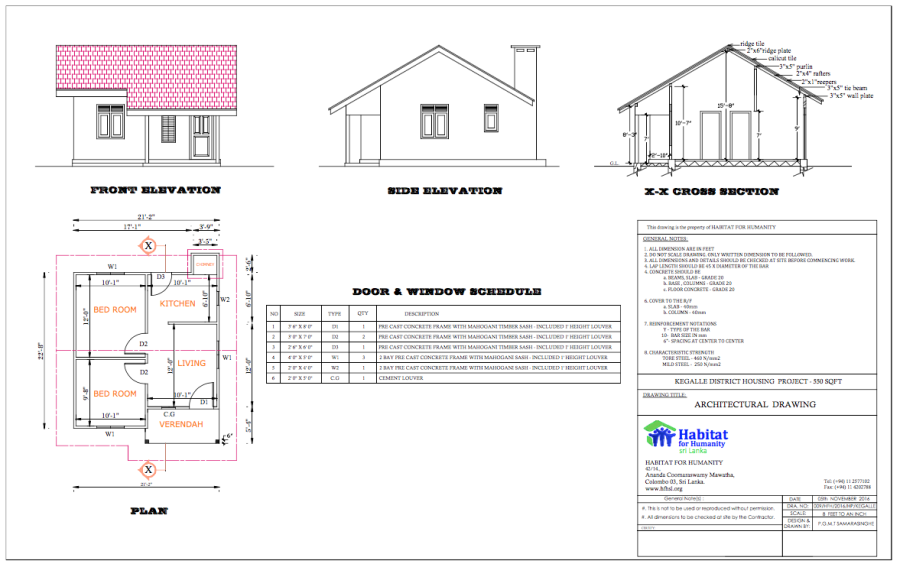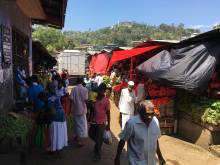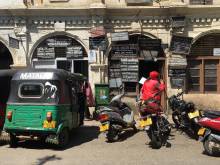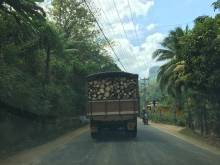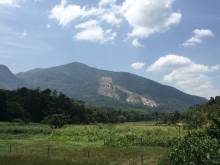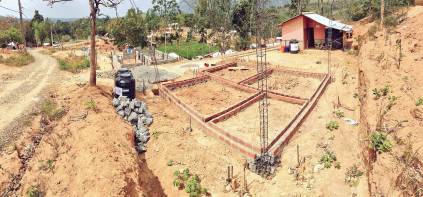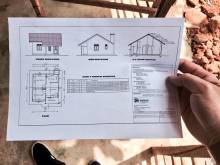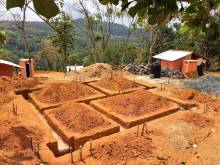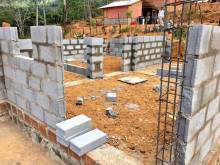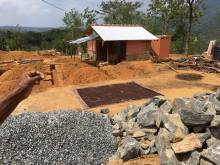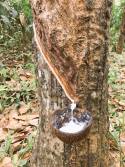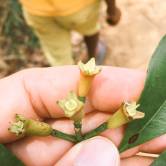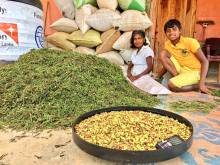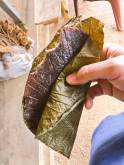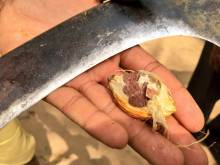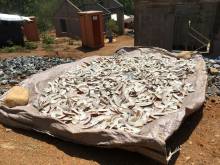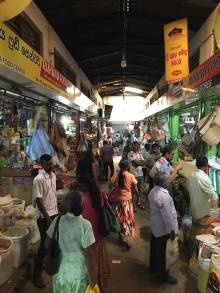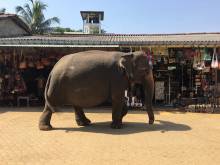Table of Contents
Engineers for Social Impact (EfSI)
Engineers as Ethnographers (EfSI I.)
EfSI I. (Engineers for Social Impact “one”) is NYUAD's Engineering Departments first year program build around the course Engineering Ethics. The text below is based on the document “v. 2015-03.SriLanka” by C. Brandt, A. Geissinger, K. Grimm, K. Shahin, M. Karau, and R. Jagannathan. It was adapted by Felix Beck to the geographical and sociological particularities of the area of Aranayake (Sri Lanka, Kandy region) that students visited in February 2017.
Context
Classical engineering field work in less developed countries invites expert engineers to work with a community to build infrastructure capacity over a short window of time. Engineers for Social Impact forms the backbone of a program in which New York University Abu Dhabi students and faculty thoughtfully co-innovate with communities over an extended period of time. To build capacity and understanding of assets and opportunities of partnering communities, the field lab focuses primarily on gleaning insights that would be otherwise impossible to access from a review of literature or survey of scholarly works. Our mantra: “Do, ask, see, and interact with what can only be experienced in the field. Engineering and technology innovation can happen anywhere.”
As Global Engineers, students are expected to have ventured meaningfully from the classroom. NYU Abu Dhabi's engineering degree is strengthened by these field labs, as they foster students development of knowledge of contemporary issues, allow them to thrive as part of a multi-disciplinary team, and broaden horizons to understand the impact of engineering solutions in a global, economic, environmental, and societal context.
The following work activities will be carried out during the program from 17th March to 24th March 2017.
- Setting out of one house
- Floor concreting of some houses
- Cement block masonry wall
- Roof framing & roof covering
- Cut & leveling of soil in some areas
- Material shifting / transport to relevant sites (cement blocks/roof timber/roof tile etc…)
Documentation
Pictures from Feasibility Trip (February 2017) and the student's field trip (March 16th – 24th, 2017)
Ethnography
The written product for each team in Sri Lanka will be an ethnography, which must address the following aspects of the cultural and engineering context of the Aranayake area. Teams are expected to produce, at minimum, a richly detailed paragraph for each aspect below. Students are asked to follow the outline provided below, labeling each paragraphs with the corresponding header. Teams should also provide a photograph to highlight one of the most distinctive or compelling dimensions of the ethnography.
Tools of the Engineer Ethnographer
Students can gather this information through:
- The Habitat for Humanity orientation
- The help of the Habitat for Humanity staff members working with their teams on the builds
- The help of the community members and members of the family helping with the build (Bring your Scholars Abroad notebook and and a pen to the build site each day for taking notes. Also bring a copy of this ethnography.
- Participant observation and detailed field notes on all aspects of the EfSI project and itinerary
Aspects
Each build team will gather information about the aspects listed below specific to the families with which it builds. In the mixed Ethnography teams in the evening, students will synthesize these multiple sources of information to represent their broader understanding of each aspect and how they interrelate. Whenever possible, students should provide a specific example from the family context to illustrate those broader understandings.
- Understanding the Family Context: Who are the members of the family (ages, relationship)? When did they move to this land? Has the family owned land in the neighborhood previously? What was the impact of the civil war on the family? Were they living in the same area before and during the war? If not, where did they live before and what caused them to move? How many years have they lived here? How long did it take them to build the current house? What is their current source of income? Do they have any family members living elsewhere who help them financially (example, relatives working in the Middle East or the UAE.)? Who are the income earners in the family? Where do the children go to school? Is it a public school? What religion, if any, does the family practice? What language(s) are spoken by family members? Does the family pay rent or taxes? Could the family ever own the land on which they currently live? What land use policy governs the current and future use of that government land? What is the source of power, water, waste disposal and sanitation system for the home?
- Understanding the HFH and Community Building Context: Where did the family obtain the building materials for their original house on this land? How long did it take to put up the current structure? What does the family see as the most important building improvements? What would most immediately improve their quality of life? What building skills do family members have? What contributions do other members of the community make to the building effort? Do you see evidence of any tension in the community between the families whose houses are being actively built and those who are still waiting for funding to begin building? If so, who is managing the tension and how is it managed? How does the HFH program work (mortgage, repayment, success of repayment, additional mortgages.) What building materials does HFH use? What is the source of the materials? What innovations in building materials, techniques, and design does HFH imagine for the future in a site like this village?
- Understanding the Civil and Urban Engineering Context: How big is this piece of government owned land? What infrastructure has the government provided for the community (roads, power source, water source, sanitation, systems)? What infrastructure has the community created for itself in the absence of government infrastructure?
- Understanding the Cultural Context: What are the social institutions in the community? Religious institutions (e.g. church, temple, mosque), formal and informal governance structures, community gathering places and occasions, commercial enterprises (small businesses, grocery stores, banks.)
- Understanding the Context of Economic Development: Most contemporary Economics courses focus on market transactions where labor and other inputs are sold for money, which in turn is exchanged for products. The local population in the Sampur area has a number of valuable inputs, most notably their labor but very limited access to markets from which they can turn that labor into money or products. How can technological innovations help the local people turn their unused labor and/or other assets into money or products that can better their lives? Contemporary engineering and product development often focuses on developing labor-saving technologies. How might engineering and product development aimed at populations with a relative abundance of available time for labor reflect that different perspective? Constructing buildings such as we are doing on the Habitat for Humanity project (or for that matter on any building project) requires a combination of skills, materials, and labor. Habitat is supplying professional expertise and materials. The local population provides labor, familiarity with local materials and building methods, and local knowledge/expertise. What is it that you as engineering students and temporary members of this community can most contribute to the project? What process(es) can you include in your future engineering projects that will create a model that allows your projects to benefit from the specialized knowledge your clients are likely to bring to the table?
- Asset Mapping: Where are the points of strength of this community? For example, how does the proximity to the ocean and the bay influence the community? Think broadly and observe carefully. What assets (natural, human, technological, cultural) could the community draw upon to forward its capacity and quality of life? What are the key opportunities for this particular community?
- Specific Thread: Each team will write one paragraph that will focus on a different “thread”, a key asset, issue, or opportunity, in the fabric of the community, and trace its influence and role in the community. Details of the thread and the ways that it is integral to the community will provide unique views of the community that complement and support the team’s community-wide ethnographic research. A thread will be assigned to each group. You need to write one paragraph only on the thread that you are assigned. The other teams will cover the other threads.
- Communications
- Entrepreneurship and Innovation
- Agriculture and Food Security
- Energy
- Water
- Mobility
- Health
- Labor and Employment
- The Bigger Picture: What key policy questions come to mind in relation to what you have learned and seen? What design opportunities (requiring a technology solution) have you seen that future EfSI teams could address and that could serve other similar communities at this socio-economic level? If you were the head of the HULT Global Business Challenge, what “challenge” could you imagine in relation to poverty shelter? (Think really big!)
- Shout Out: In this final paragraph, each team should note the people it would like to thank for contributing to its learning and experience.
Methodology: Guiding Principles
- In conducting the ethnographic inquiry, students should give great attention to the following:
- Maintaining the confidentiality of information and privacy of those they have interviewed. The information should not be publicly posted. It is for the purpose of this EfSI field seminar only. Use designations instead of names (the father of the family, one of the children, etc.)
- Using the best of judgment and ethical consideration in posting anything about the EfSI project on social media.
- Avoiding leading questions. (e.g. Are you unhappy about the land policy? vs. Please tell me about the land policy and how it affects your family.)
- Asking for permission to take photographs or films. Use photography and social media ethically and with sensitivity to the context of your responsibilities to the communities of NYUAD and Aranayake.
Deadlines
- Each team must make an oral presentation about its “thread” supported by Powerpoint of its findings at a group presentation session on the last day of the program in Aranayake. Presentations are limited to 5 minutes and no more than 10 slides including cover and thank you slides.
- Each team must present a written report upon return to NYUAD no later than 17:00 on April 5, 2017 via Google Drive (time t.b.d. — Felix Beck 2017/03/01 08:34). Prizes will be awarded for the three best reports. Reports will be assessed on:
- Creating an overall ethnography that could help any engineer get a comprehensive understanding of the socio-cultural context of the community through the rich detail of the aspect paragraphs.
- A clear synthesis of diverse perspectives and information gleaned from students on the Ethnography Team having worked on diverse Build Teams.
- Big picture thinking on the policy, asset mapping, and thread paragraphs.
- Evidence of additional web-based research done to understand the thread and greater Sri Lankan context.
- Quality of expression (have the report reviewed by a GAF in the Writing Center. It should represent the best of professional writing practice.)

